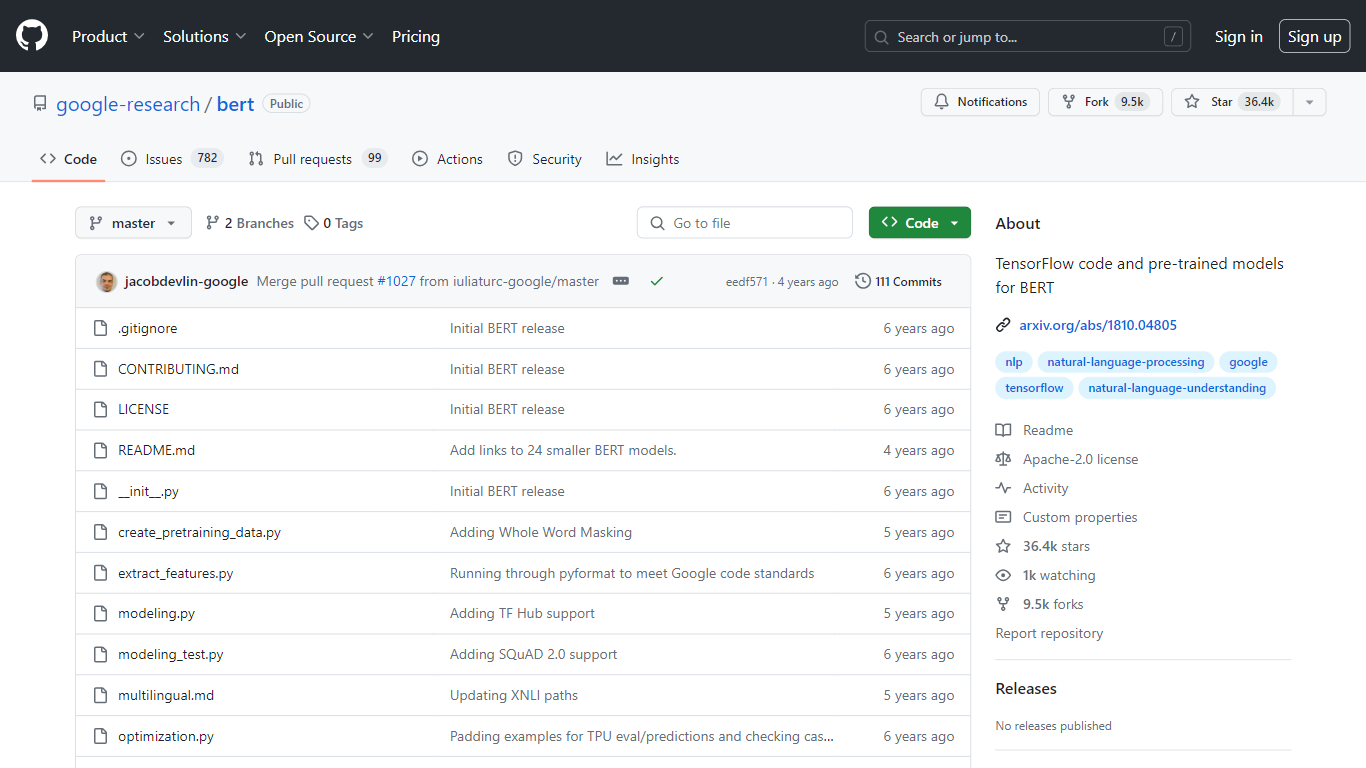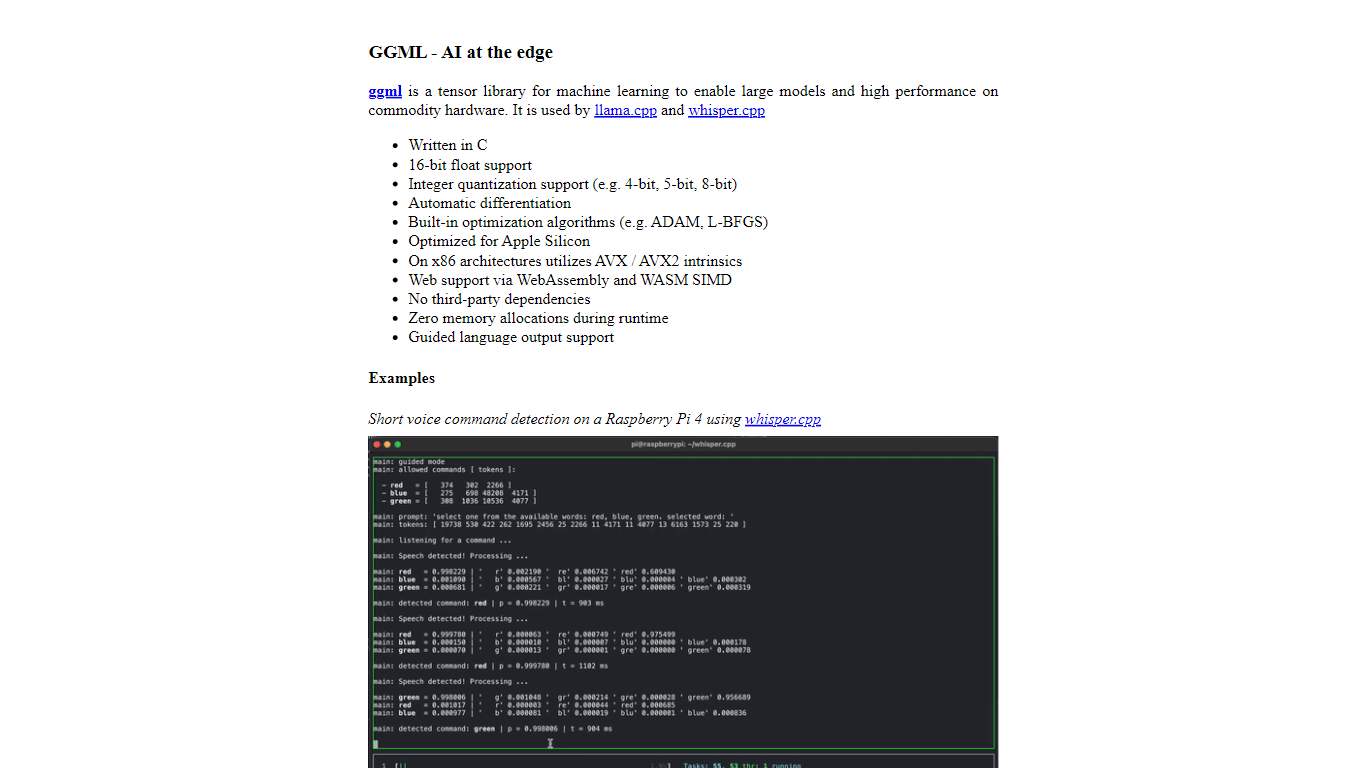google-research/bert vs ggml.ai
Dive into the comparison of google-research/bert vs ggml.ai and discover which AI Large Language Model (LLM) tool stands out. We examine alternatives, upvotes, features, reviews, pricing, and beyond.
When comparing google-research/bert and ggml.ai, which one rises above the other?
When we compare google-research/bert and ggml.ai, two exceptional large language model (llm) tools powered by artificial intelligence, and place them side by side, several key similarities and differences come to light. The users have made their preference clear, google-research/bert leads in upvotes. The number of upvotes for google-research/bert stands at 7, and for ggml.ai it's 6.
Feeling rebellious? Cast your vote and shake things up!
google-research/bert

What is google-research/bert?
The GitHub repository google-research/bert is a comprehensive resource for those interested in working with the BERT (Bidirectional Encoder Representations from Transformers) model, which is a method of pre-training language representations. Developed by researchers at Google, BERT has revolutionized the way machines understand human language.
The repository provides TensorFlow code and several pre-trained BERT models that can be used to build natural language processing (NLP) systems that understand textual input more effectively. With a wide range of applications in sentiment analysis, question answering, and language inference, this repository is an invaluable tool for developers and researchers looking to leverage the power of advanced NLP in their projects. The pre-trained models come in different sizes to accommodate various computational constraints, offering flexibility for deployment in different environments.
ggml.ai

What is ggml.ai?
ggml.ai is at the forefront of AI technology, bringing powerful machine learning capabilities directly to the edge with its innovative tensor library. Built for large model support and high performance on common hardware platforms, ggml.ai enables developers to implement advanced AI algorithms without the need for specialized equipment. The platform, written in the efficient C programming language, offers 16-bit float and integer quantization support, along with automatic differentiation and various built-in optimization algorithms like ADAM and L-BFGS. It boasts optimized performance for Apple Silicon and leverages AVX/AVX2 intrinsics on x86 architectures. Web-based applications can also exploit its capabilities via WebAssembly and WASM SIMD support. With its zero runtime memory allocations and absence of third-party dependencies, ggml.ai presents a minimal and efficient solution for on-device inference.
Projects like whisper.cpp and llama.cpp demonstrate the high-performance inference capabilities of ggml.ai, with whisper.cpp providing speech-to-text solutions and llama.cpp focusing on efficient inference of Meta's LLaMA large language model. Moreover, the company welcomes contributions to its codebase and supports an open-core development model through the MIT license. As ggml.ai continues to expand, it seeks talented full-time developers with a shared vision for on-device inference to join their team.
Designed to push the envelope of AI at the edge, ggml.ai is a testament to the spirit of play and innovation in the AI community.
google-research/bert Upvotes
ggml.ai Upvotes
google-research/bert Top Features
TensorFlow Implementation: Complete TensorFlow code for implementing the BERT model.
Range of Model Sizes: Availability of 24 smaller BERT models suited for environments with restricted computational resources.
Pre-trained Models: A set of pre-trained BERT models that can be fine-tuned for various NLP tasks.
Extensive Documentation: Includes files like README.md and CONTRIBUTING.md to help users understand how to use the repository effectively.
Open Source Contribution: Opportunities for developers to contribute to the ongoing development of BERT.
ggml.ai Top Features
Written in C: Ensures high performance and compatibility across a range of platforms.
Optimization for Apple Silicon: Delivers efficient processing and lower latency on Apple devices.
Support for WebAssembly and WASM SIMD: Facilitates web applications to utilize machine learning capabilities.
No Third-Party Dependencies: Makes for an uncluttered codebase and convenient deployment.
Guided Language Output Support: Enhances human-computer interaction with more intuitive AI-generated responses.
google-research/bert Category
- Large Language Model (LLM)
ggml.ai Category
- Large Language Model (LLM)
google-research/bert Pricing Type
- Free
ggml.ai Pricing Type
- Freemium
